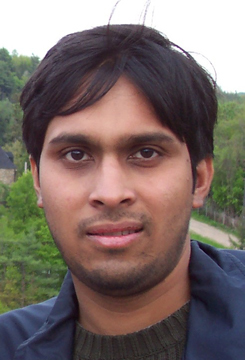My research broadly focuses on studying pathology and normative brain function at a macroscopic level through the use of non-invasive imaging. My current work aims to develop and validate imaging technologies to explore brain structure and function at a finer spatial resolution than is typically achieved. Toward this end, we utilize state-of-the-art acquisition and analysis techniques based on high-resolution MR imaging. Recently, we have ventured into imaging at a high magnetic field of 7 Tesla.
The specific class of imaging problems that serves as a testbed for these technologies in our work revolves around detailed studies of the human medial temporal lobe, including the hippocampal formation and extra-hippocampal cortices. I’m part of the Hippocampus Gang, led by Paul Yushkevich, that has been developing a lot of the enabling technologies for this work. I’m currently co-directing the following projects:
- Development of image acquisition and analysis techniques for high-resolution imaging of medial temporal lobe at 7 Tesla (Collaborators: David Wolk and Jongho Lee). This work is currently funded by a pilot grant from University of Pennsylvania’s Institute for Translational Medicine ( TAPITMAT-TBIC #10037893 ).
- High resolution imaging of medial temporal lobe in temporal lobe epilepsy patients (Collaborator: Kathryn Davis). This work is supported by a pilot grant from University of Pennsylvania’s Center for Biomedical Image Computing and Analytics.
In addition to this, I’m involved in several ongoing projects in the laboratory:
- Using resting-state BOLD fMRI to study brain networks that have dissociable connectivity with subregions of the medial temporal lobe (Collaborator: David Wolk). In particular, we are looking at evidence of involvement in anterior vs. posterior MTL networks, as well as networks within the MTL, in prodromal Alzheimer’s Disease.
- MTL subregional morphometry using high-resolution structural MRI now available as part of the ADNI2 (Alzheimer’s Disease Neuroimaging Initiative) study. We are part of the ADNI subfield imaging group that is testing several automated methods to make measurements of MTL subregions, including hippocampal subfields. This work is supported by Alzheimer’s Association.
- Exploring the role of hippocampus and extra-hippocampal MTL cortex in mediating working memory (Collaborator: David Wolk). This project uses cortical cortical thickness as an imaging marker and extensive behavioral testing in older healthy controls and amnesic MCI patients to tease out the brain-behavior relationships as they relate to object memory, spatial memory and contextual binding of the two during working memory tasks.
Selected publications:
